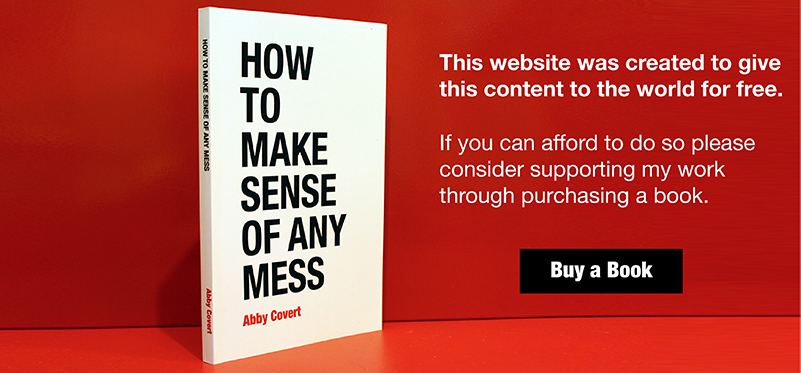Interface (noun.)
Definition: A point where a user affects a location or object.
Also referenced as:
Related to: Edge, Experience, Facade, Interact, Level, Location, Noun, Object, Place, Placemaking, User
Chapter 3: Face Reality | Page 74
9. Schematic
A schematic is a diagram of an object or interface simplified for the sake of clarity. Schematics are known by many other names including wireframes, sketches, lo-fis, and blueprints.
Since a schematic reduces complexity, unintended errors and ambiguity can be introduced. Would someone understand from the previous schematic to put cheese on top of the tomato sauce? Maybe not.
This is a case where an exploded schematic is useful, because it shows how the individual pieces come together to form the whole.


Chapter 4: Choose a Direction | Page 100
Watch out for options and opinions.
When we talk about what something has to do, we sometimes answer with options of what it could do or opinions of what it should do.
A strong requirement describes the results you want without outlining how to get there.
A weak requirement might be written as: “A user is able to easily publish an article with one click of a button.” This simple sentence implies the interaction (one click), the interface (a button), and introduces an ambiguous measurement of quality (easily).
When we introduce implications and ambiguity into the process, we can unknowingly lock ourselves into decisions we don’t mean to make.
As an example, I once had a client ask for a “homepage made of buttons, not just text.” He had no idea that, to a web designer, a button is the way a user submits a form online. To my client, the word button meant he could change the content over time as his business changes.
Chapter 4: Choose a Direction | Page 84
What are you making?
Nothing exists in a vacuum. Everything connects to a larger whole. Whenever you’re making something, figure out which levels you’re working at:
Interface: a point where a user affects that thing.
Location: a particular place or position.
Journey: the steps in or between locations.
Structure: a configuration of objects and locations.
System: a set of structures working together.
Chapter 4: Choose a Direction | Page 99
Think about relationships between nouns and verbs.
When you combine nouns with appropriate verbs, the resulting sentences can be referred to as requirements for what you’re making.
From the previous example:
- An author can write a post.
- An author can delete a post.
- Any user can share a post.
- Any user can read a post.
This list of requirements defines the ideal solution. Each requirement tells us who should be able to do what in the eventual state.
When you take the time to make requirements concrete and prioritize them, you can better understand what you’re actually making.
If you’re designing an interface that prioritizes reading, it will be fundamentally different than an interface that prioritizes writing, even with the exact same list of requirements.
